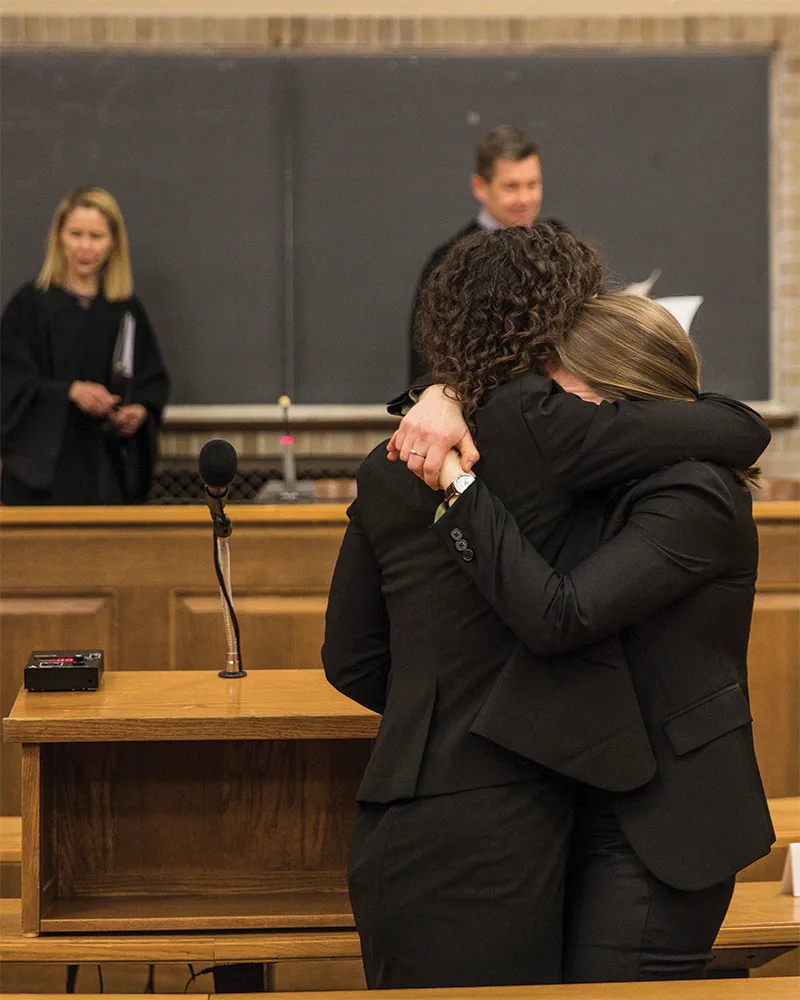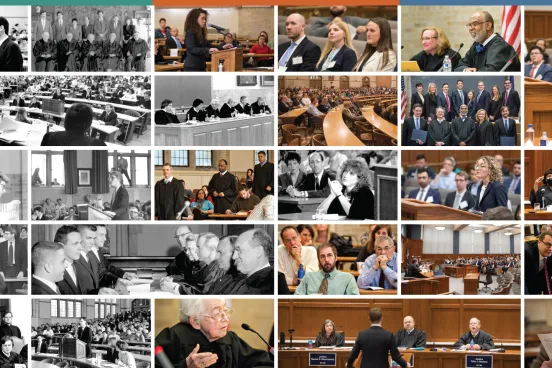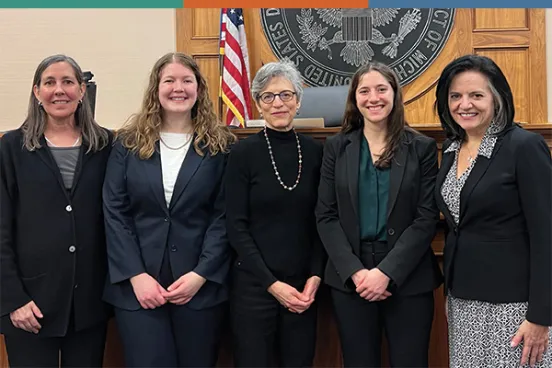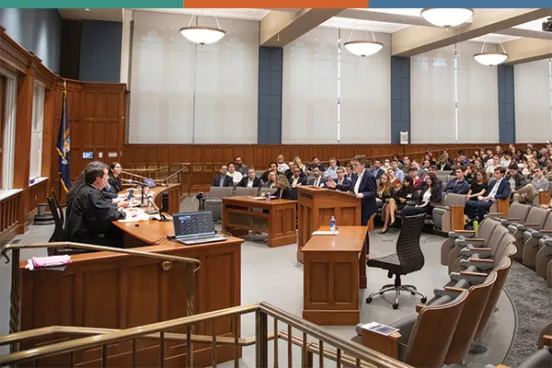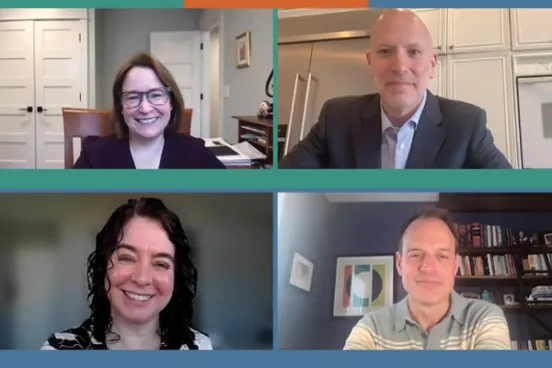The experience of the Campbell Moot Court Competition stays with participants for decades. Law Quadrangle reached out to previous winners and asked for their stories, excerpts of which are included here.

1958
“The biggest lesson I learned is that preparation is crucial. There was also a collegiality that was present during my practice years but I am afraid has diminished in recent years.”
—Blair D. Benjamin, ’59, Education and Health Corporate Attorney (Retired)


2007
“Both the most nerve-wracking and exhilarating moment was standing up first to argue in the final before a packed audience in Hutchins 100. I’ve handled many big hearings, trials, and appellate arguments since, but never in front of such a large audience. That experience helps calm me even to this day.”
—Jeremy Suhr, ’07, Partner, Boulware Law LLC
“At the final, I said something that seemed like it might be leading to a concession, and there was an audible gasp through the auditorium—and then I transitioned to the key distinction between our case and the unfavorable line of precedent we had been discussing. It worked well, and several friends watching it said that everyone breathed a huge sigh of relief after the transition. It was much more dramatic than most of my arguments as a practitioner.”
—Robert Stockman, ’07, Appellate Attorney, US Department of Justice, Environment and Natural Resources Division

2023
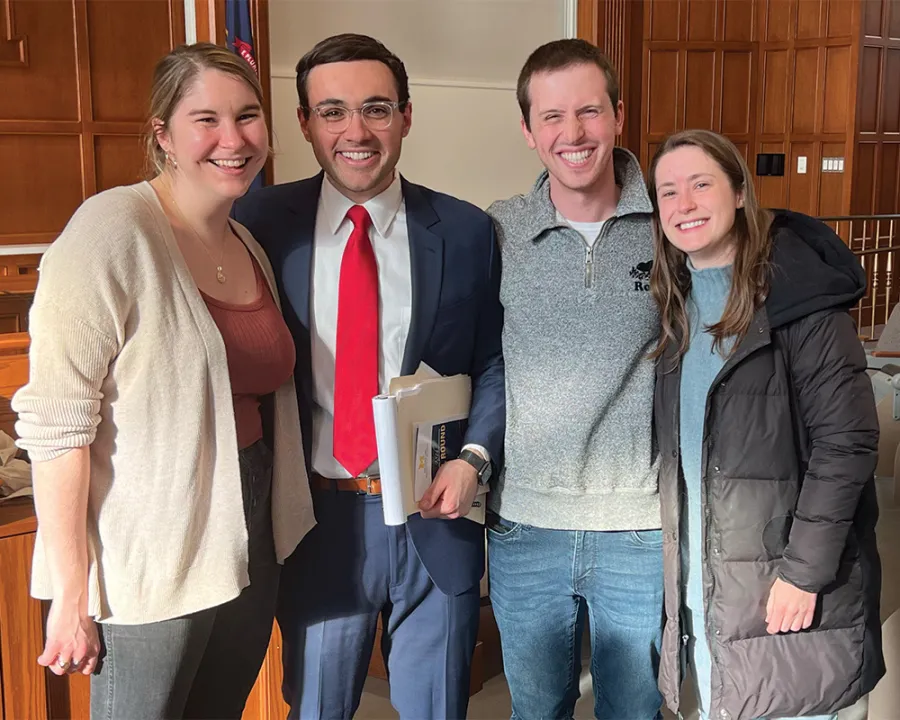
“During the semifinals, I fumbled my opening lines to the point where I briefly forgot which side I was supposed to be arguing. Thankfully, I turned it around, but I’ll never forget it.
Before the final round, Professors Mendelson, Deacon, Litman, Mortenson, and Walker sat down with me and my co-finalist, Gabe Chess, ’23, to think through some of the tricky legal issues and how best to reconcile the key cases.
Having been in practice briefly, those times sitting around a table and workshopping strategy with a team of smart lawyers are my favorite parts of appellate litigation. Getting to do the oral argument is just an added bonus.”
—Mark Rucci, ’23, Assistant Attorney General, Office of the Solicitor General for the District of Columbia; he begins a clerkship on the US Court of Appeals for the Third Circuit in August.

2011
“After a semifinal argument, one professor told me that my style would someday make me an effective trial lawyer—not what you want to hear in the context of an appellate moot court. Fifteen years later, I’m a trial lawyer.”
—Sam Rudman, ’12, Partner, Choate Hall & Stewart

2000
“There were two hours between the competition and the banquet—far too long for an immature winner like myself. By the time I arrived at the banquet, I was well in my cups.
The dean of students spotted me on the way in and very cordially steered me to a table far from the federal judges who presided over our competition.
There were four finalists and three judges—each judge's table had a finalist. I sat with the dean.”
—Bill Jenks, ’00, Principal, Jenks IP Law
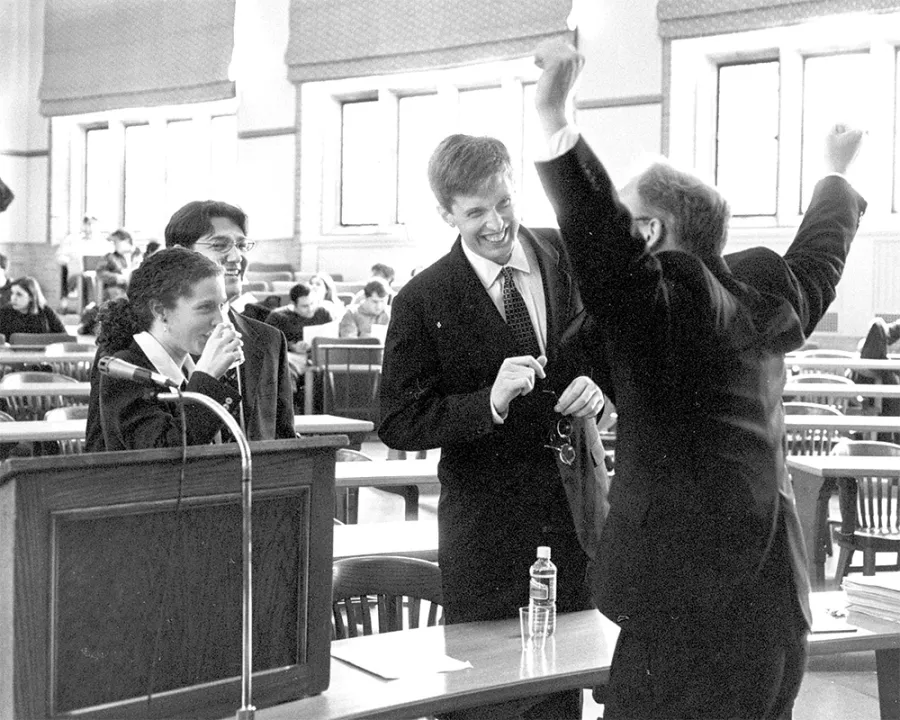

2012
“My then-girlfriend, now-wife was also a semifinalist. Waiting for the draw to see if we’d have to go up against one another was agonizing. (We didn’t.)”
—Daniel Lewin, ’13, Senior Associate, Stowell & Friedman Ltd.

2009
“My partner [Frances Lewis, ’10] was so much better at appellate advocacy than I was, and she is the reason we won the competition. So the lesson is to surround yourself with people who are way better than you.”
—Usman Ahmed, ’10, Payments Market and Partnerships, Corporate Strategy, PayPal

2018
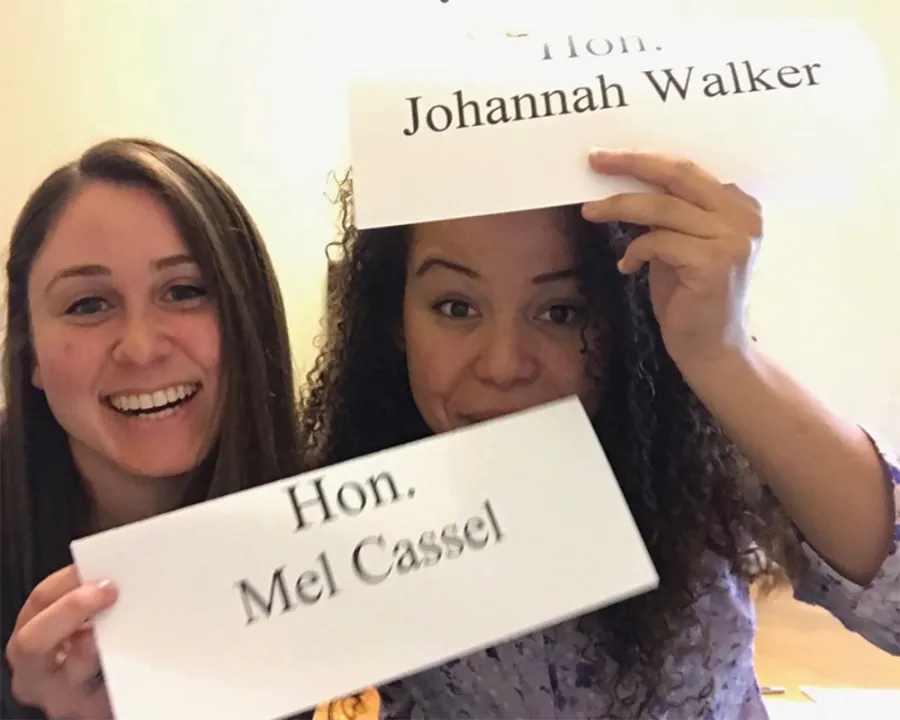
“The people involved in Campbell were 99 percent of what made it such a wonderful experience.
John He, ’18, was my ‘opponent’ in the finals, but we were friends throughout law school. We mooted each other before the finals and hugged after the argument ended.
My official partner was Eric Fledderman, ’18. We were fast friends at Michigan and remain good friends today.
My unofficial partner, Mel Cassel, ’18, mooted me for hours upon hours throughout the competition—in part because she is a kind, generous friend who would do that for anyone and, in part, because we were unwittingly falling in love. We got married six years later.”
—Johannah Cassel-Walker, ’18, Senior Associate, Supreme Court and Appellate Litigation, Hogan Lovells

2004
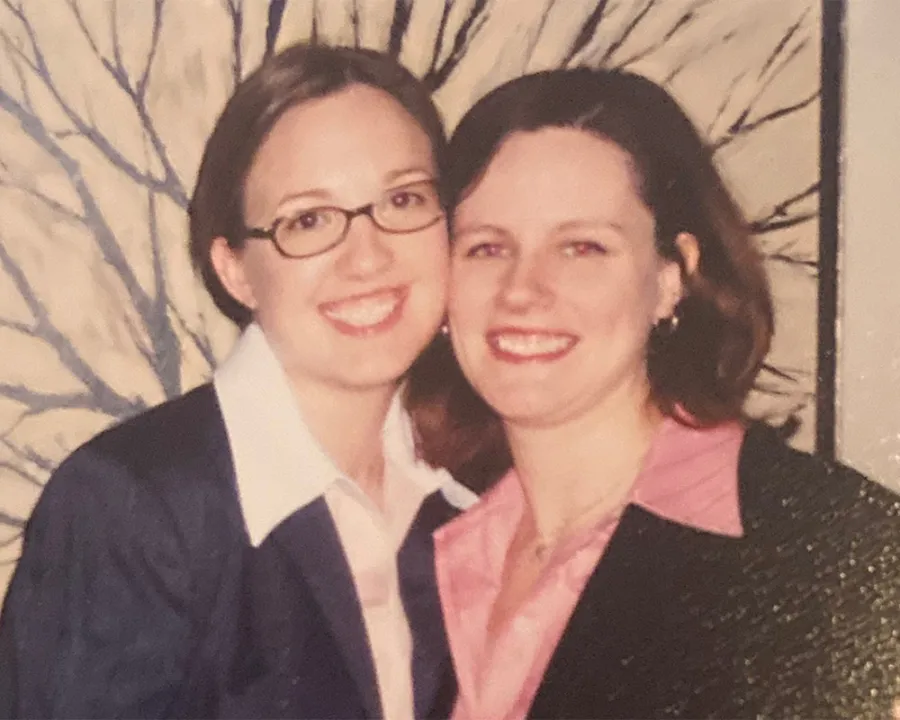
“When Katie and I were going through the moot court process, we made little team purchases. By the time we got to the final, we had matching bracelets, matching necklaces with our first initials, and pink dress shirts. We were really playing up the woman angle, which is funny in retrospect, given how the Big Law environment encouraged me to go in the other direction.”
—Jessie Morgan Gabriel, ’04, Founder and Managing Partner, All Places
“I recall one of the judges telling both teams that our briefs were far better than many they reviewed that were submitted by ‘real’ lawyers. I assumed at the time that she was probably exaggerating and just looking for something nice to say in front of our peers, professors, and parents.
In retrospect, my reaction was a clear example of early imposter syndrome; it was not, in fact, laughable to say that the briefs we’d spent months perfecting were of very high quality just because we hadn’t yet earned our degrees and started practicing law.
I’ve reminded myself of this when I’ve thought I was too underqualified or inexperienced to raise my hand for opportunities.”
—Katie (Lorenz) de Villiers, ’04, Assistant US Attorney, District of Oregon

2010
“When I went to law school, I expected to be doing transactional and venture capital work. My Campbell experience helped show me that I was more interested in litigation. I still think about all of the preparation that went into the Campbell arguments, including the binders full of cases to read and learn, every time I prepare for an argument of my own.”
—Jake Walker, ’10, Partner, Block & Leviton LLP

2005
“My Campbell partner was my very best friend, Patrick Egan, ’05. We pulled all-nighters writing our Campbell briefs and spent countless hours mooting each other in preparation for our oral arguments, both of us realizing that we enjoyed the process of crafting and presenting an argument in court. I went into private practice, and Patrick, the most principled person I have ever known, went into public service, first with the DOJ Honors Program, then at the District Attorney’s Office in Manhattan, and then as an assistant US attorney in the Southern District of New York.
Patrick’s life was cut far too short in 2019, when he died from a rare and aggressive cancer. The Campbell competition wasn’t merely a feather in my cap from my days in Ann Arbor; it was part of the beginning of the best and most rewarding friendship of my life.”
—Ed Kilpela, ’05, Partner, Wade, Kilpela, Slade
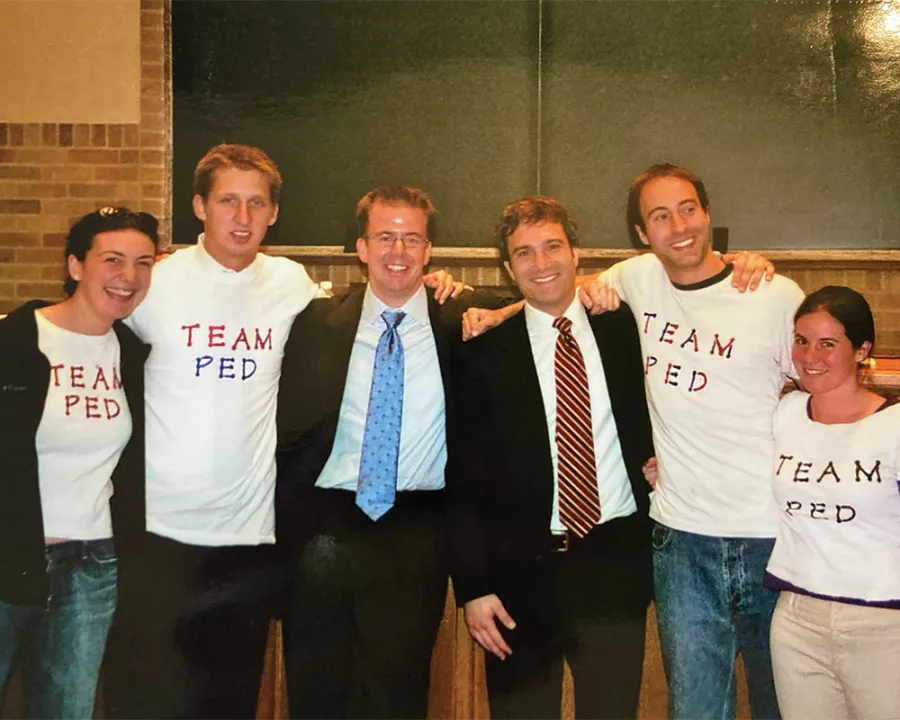

2014
“My opponent in the final round was Daniel Halainen, ’15, and working with him was the highlight of my Campbell experience.
I say ‘with,’ not ‘against,’ very deliberately because the relationship that grew out of our competition was one of collaboration and deep mutual respect. Each of us wanted to do our personal best and to see the other person succeed; to that end, we arranged joint moots in front of panels of professors and of our fellow students.
By the final, we knew each other’s arguments backward and forward, each other’s strengths and weaknesses; we’d heard each other make mistakes, say silly things, try arguments that didn’t work. It was only possible because we had confidence in our own abilities and trust in each other, which is all the more remarkable because we didn’t know each other at all before Campbell.
That experience taught me what’s possible when you treat your opponent with respect and collegiality—and that the phrase ‘my friend on the other side’ doesn't have to be just meaningless politesse.”
—Katharine Roller, ’14, Counsel to the Director, Federal Trade Commission Bureau of Consumer Protection

1977
“Our case was a lightly disguised version of Regents of University of California v. Bakke, the leading affirmative action case of the time. Our court was to have included US Supreme Court Justice Lewis F. Powell and Solicitor General Wade H. McCree, but both necessarily withdrew when the court granted certiorari in Bakke. Dean St. Antoine scrambled to find replacements but rose to the occasion by enlisting former Justice Arthur Goldberg, who had served as US Secretary of Labor before his appointment to the Supreme Court. Judge Charles Joiner of the Eastern District, a longtime faculty member, replaced Solicitor General McCree.
Justice Goldberg presided with grace and authority over our argument and in remarks from the bench made some observations that stayed with me throughout my career about the importance of winning cases on their facts by first impressing upon the court the justice of the client’s cause, then providing legal arguments that lead to a just result.”
—George Kimball, ’78, Counsel, Technology and Outsourcing Practice at Wiggin and Dana LLP and Lecturer at Michigan Law
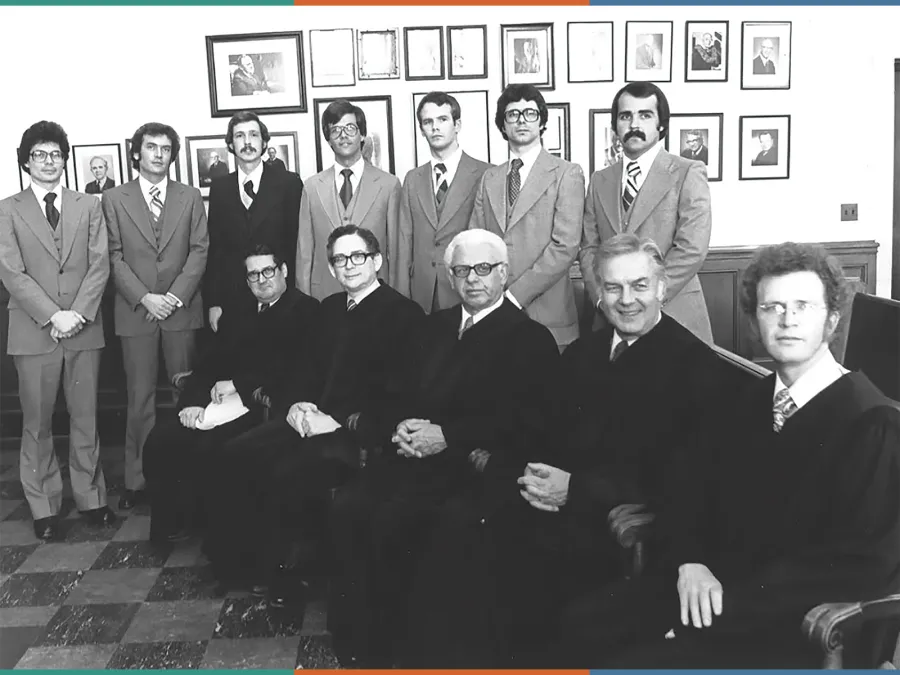

2001
“I recall one professor telling me that I gave ‘a brilliant defense of a wrong thesis.’ I recall another judge confusing on-brief and off-brief. I recall one judge asking a female competitor why she wore pants to the competition (instead of a skirt). The feedback could be harsh and at times arbitrary; you had to have a thick skin.
We learned from our mistakes: One time, the judges criticized us for talking while the other team presented. We never said a word again during any competition and only shared written notes.”
—Paul Diller, ’01, Professor of Law and Roscoe C. & Debra H. Nelson Distinguished Faculty Scholar, Willamette University
“One of the most rewarding aspects of our teamwork was the challenge of having to alternate arguing on behalf of both appellant and appellee—and sometimes switch issues within those sides. Paul and I at least tried to do so seamlessly, which was an incredible experience.”
—Steve Hessler, ’01, Partner, Sidley Austin LLP

2020
“One of the judges in the final round hired me to clerk for her after seeing me compete in the final and sitting next to me at the celebratory dinner afterward.
That clerkship became one of the most valuable professional and mentorship experiences in my career. In that sense, Campbell quite literally set the trajectory of my law career.”
—Sophie Montgomery, ’21, Appellate Associate, Jenner & Block
